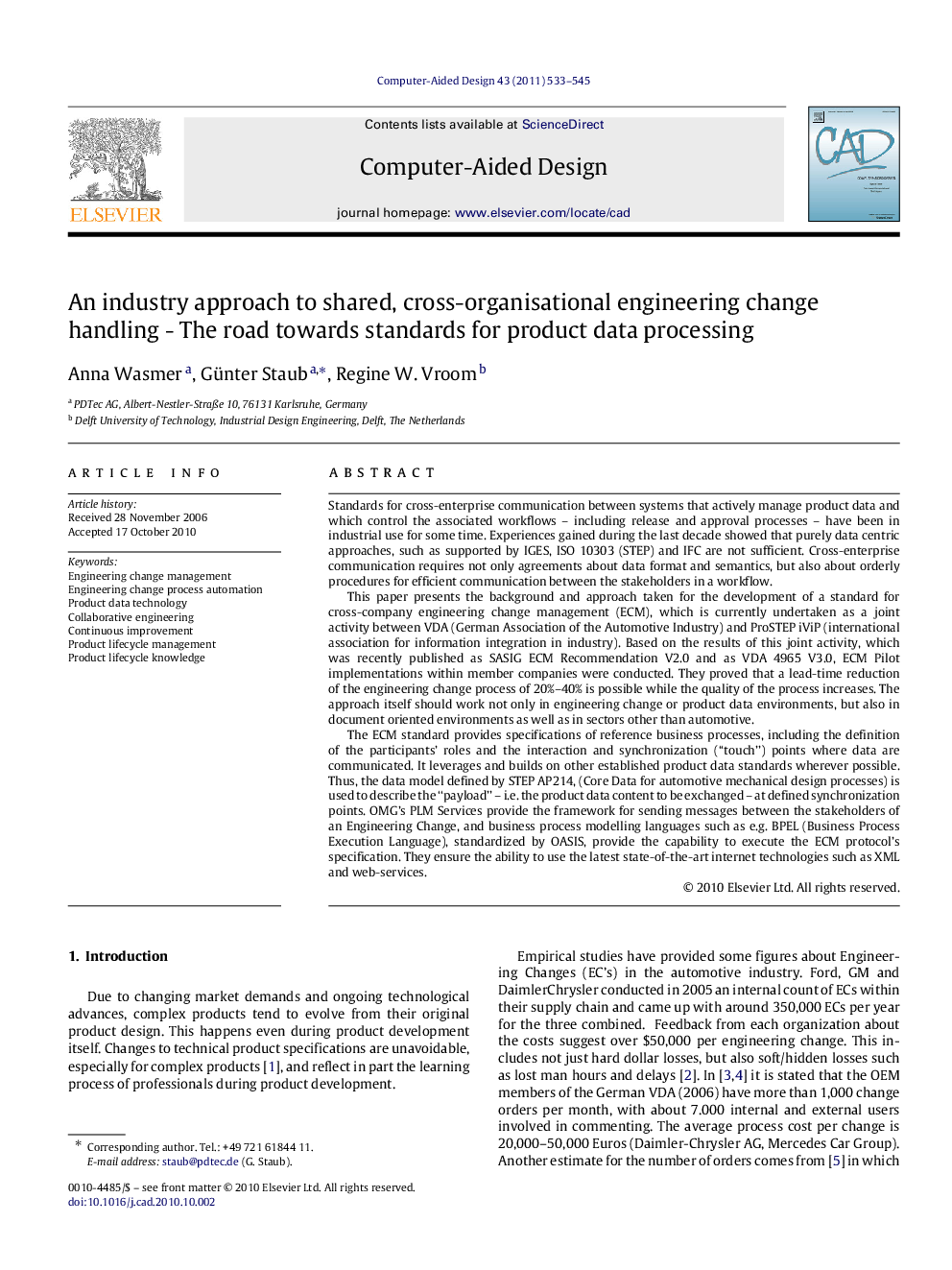| کد مقاله | کد نشریه | سال انتشار | مقاله انگلیسی | نسخه تمام متن |
|---|---|---|---|---|
| 440248 | 690985 | 2011 | 13 صفحه PDF | دانلود رایگان |

Standards for cross-enterprise communication between systems that actively manage product data and which control the associated workflows–including release and approval processes–have been in industrial use for some time. Experiences gained during the last decade showed that purely data centric approaches, such as supported by IGES, ISO 10303 (STEP) and IFC are not sufficient. Cross-enterprise communication requires not only agreements about data format and semantics, but also about orderly procedures for efficient communication between the stakeholders in a workflow.This paper presents the background and approach taken for the development of a standard for cross-company engineering change management (ECM), which is currently undertaken as a joint activity between VDA (German Association of the Automotive Industry) and ProSTEP iViP (international association for information integration in industry). Based on the results of this joint activity, which was recently published as SASIG ECM Recommendation V2.0 and as VDA 4965 V3.0, ECM Pilot implementations within member companies were conducted. They proved that a lead-time reduction of the engineering change process of 20%–40% is possible while the quality of the process increases. The approach itself should work not only in engineering change or product data environments, but also in document oriented environments as well as in sectors other than automotive.The ECM standard provides specifications of reference business processes, including the definition of the participants’ roles and the interaction and synchronization (“touch”) points where data are communicated. It leverages and builds on other established product data standards wherever possible. Thus, the data model defined by STEP AP214, (Core Data for automotive mechanical design processes) is used to describe the “payload”–i.e. the product data content to be exchanged–at defined synchronization points. OMG’s PLM Services provide the framework for sending messages between the stakeholders of an Engineering Change, and business process modelling languages such as e.g. BPEL (Business Process Execution Language), standardized by OASIS, provide the capability to execute the ECM protocol’s specification. They ensure the ability to use the latest state-of-the-art internet technologies such as XML and web-services.
Research highlights
► Method and standard for the processing of Engineering Changes in the automotive supply chain.
► Model that represents the data and data handling requirements of a company independent Engineering Change Management (ECM) reference process.
► ECM interaction scenarios and reference messages that enable automated execution of frequently occurring Engineering Change processes.
► Potential 20%–40% lead time reduction of the engineering change processes, and/or–enabled by increased frequency of engineering changes–improvement of overall product and process lifecycle knowledge.
► Method also applicable for Engineering Change Management in other industrial sectors and extendable to other business processes.
Journal: Computer-Aided Design - Volume 43, Issue 5, May 2011, Pages 533–545